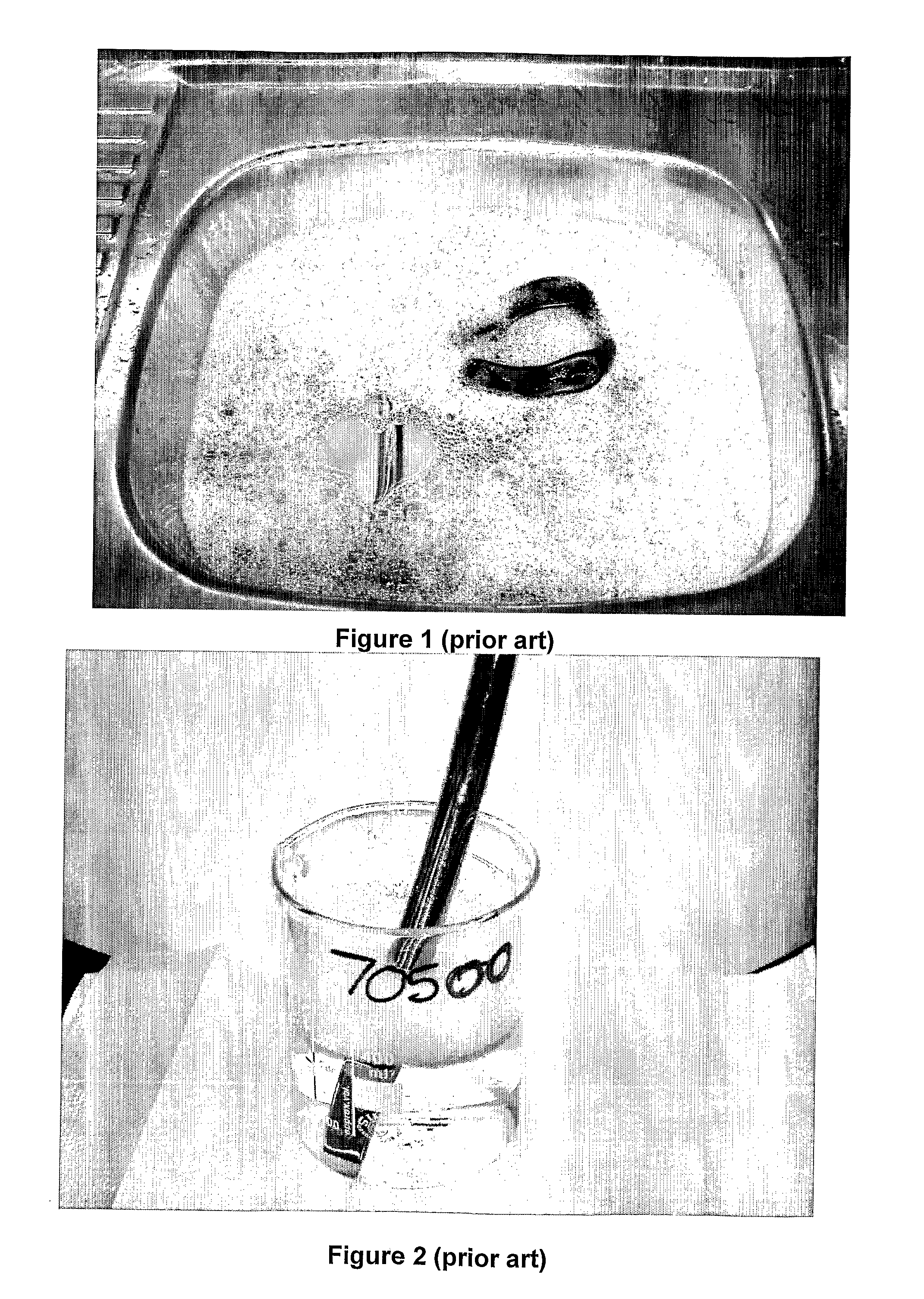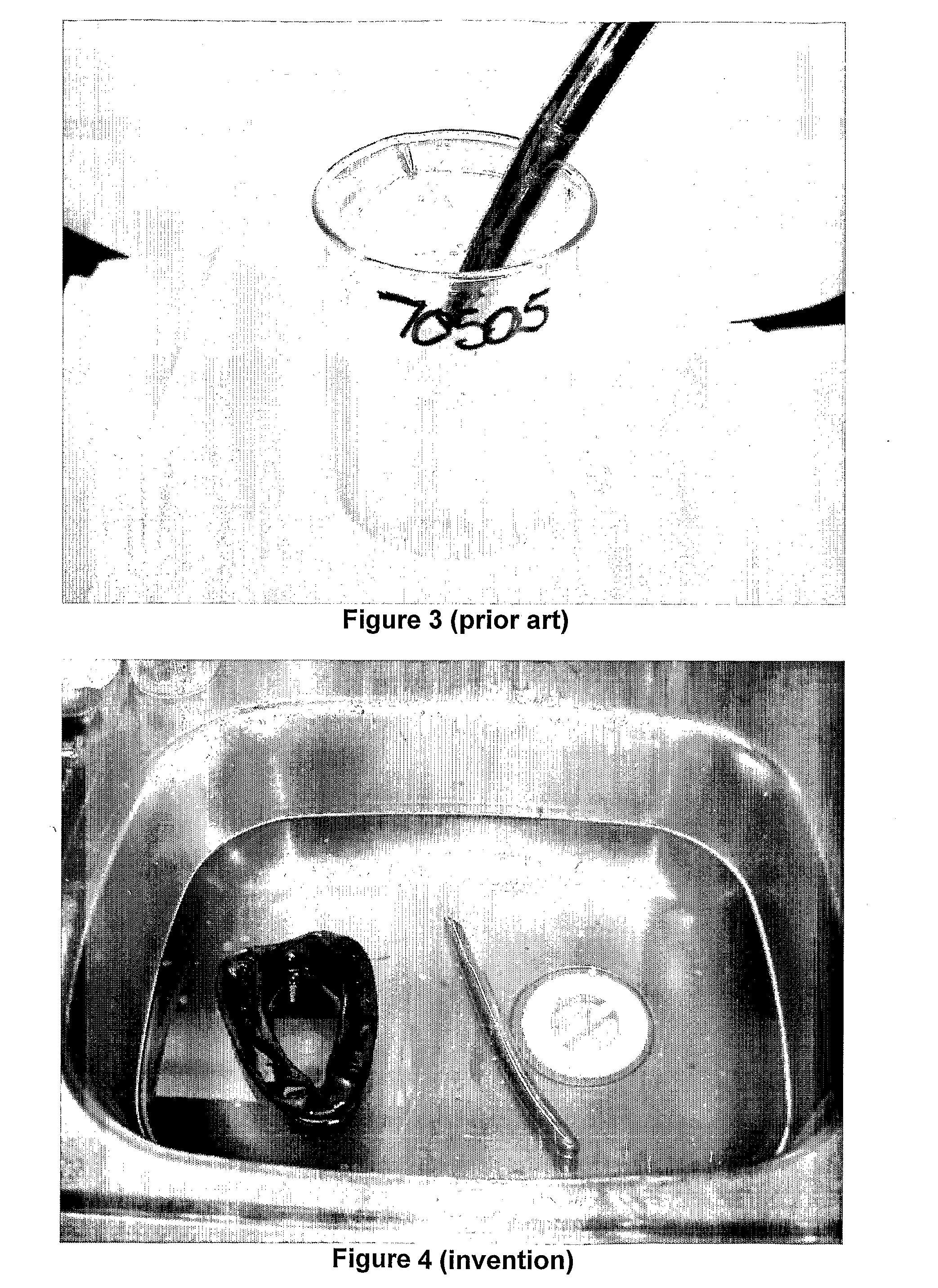It is believed that a significant number of these infections are due to inadequate reusable instrument reprocessing.
It is generally accepted that failure to adequately clean items after use in the first step may compromise the
efficacy of the second.
The challenge has been made more difficult as
medical instruments have been developed, for example endoscopes, which utilize materials that are neither temperature resistant nor chemically
inert.
In addition, the products are required to have stability and a long
shelf life.
These desiderata tend to be mutually inconsistent objectives.
In order to avoid foaming, soil removal preparations used in hospital cleaning / sterilizing “reprocessing” systems have mainly utilized highly alkaline non-foaming detergents, but their use is incompatible with both enzymes, and with materials of construction of flexible endoscopes.
Due to the incorporation of surfactants, “enzymatic detergents” tend to produce foam to an unacceptable extent.
Foaming is undesirable because it blocks the
visualization of instruments in manual cleaning baths, impedes access of washing liquor to soils during manual cleaning and blocks water jets and washing liquor circulation in automated washers (e.g., tunnel washers).
The foams tend to block the lumens of instruments preventing effective cleaning of the lumen interior.
When
enzyme based cleaners have been used in reprocessing machinery the foam tends to fill the volume thus impeding the cleaning cycle by disrupting jets and agitation.
Furthermore it makes the
machine difficult to unload, interfering with proper draining, and leaving foam residues containing pathogens which can contaminate following cleaning cycles giving rise to
significant risk of
cross infection since the cleaners do not kill the microorganisms which they dislodge from surfaces.
Increasingly the additional labour cost, time, and
water consumption costs are regarded as unacceptable.
Although this problem has been recognized, it has not to date been satisfactorily overcome.
In the first approach antifoams have been added to the cleaning composition or
washer, but that has been unsatisfactory because antifoams leave unacceptable residues on the medical instruments.
These tend to leave an undesirable film of oily residue on treated surfaces similar to that from antifoams and also produce hazy solutions which reduce
visibility during washing cycles.
As a consequence commercially available formulations results tend to be either inadequately cleansing, or high foaming, and thus not suitable for use for cleaning medical instruments, or tend to be unstable and possess an inadequate
shelf life, due to denaturing of the enzymes by surfactants employed.
Moreover, while both exhibit good stability with easily inhibited enzymes, both show poor stability with difficult to inhibit enzymes.
There currently are only limited number of existing methods of removing
biofilm from heat exchange coils.
This has proved to be problematic because the spaces between the cooling fins are insufficient to allow efficient brushing and the surface areas so extensive as to make this brushing an extremely tedious process.
High pressure water has proven to be undesirable because it damages the cooling fins which are made of thin
aluminium sections.
This has proved to be problematic because the alkali or acid, whilst eventually removing the
biofilm both causes significant corrosive damage to the
aluminium fins and the
copper refrigeration tubes to which they are attached.
This
corrosion severely limits the service life of the heat exchange coil.
 Login to View More
Login to View More  Login to View More
Login to View More 


